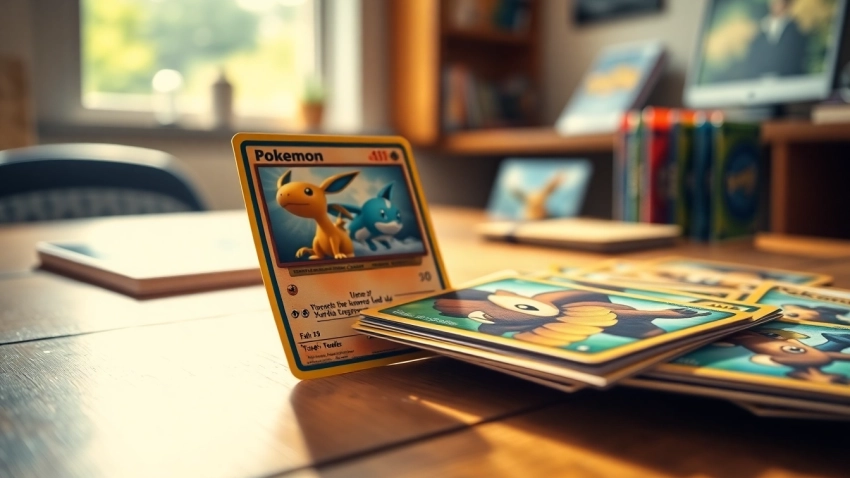
Authentic Insights on Real Pokemon Cards for Collectors and Enthusiasts
Understanding Real Pokemon Cards
For fans and collectors alike, real pokemon cards are more than just pieces of cardboard; they represent a universe of nostalgia, strategy, and community. Since their inception, the Pokémon Trading Card Game (TCG) has created a massive following, driving interest in not only the gameplay but also in collecting authentic cards.
History of the Pokémon Trading Card Game
The Pokémon Trading Card Game, introduced in Japan in 1996, quickly spurred a global phenomenon. The initial release of cards featured characters and creatures from the Pokémon video games and animated series. Collectors were eager to snag these cherished items, leading to tournaments and events worldwide. Over the years, the game evolved, bringing in new expansions with fresh mechanics and cards, including the beloved EX, GX, and VMAX series. This evolution has maintained the interest of both new players and seasoned collectors.
How to Identify Real Pokemon Cards
As the popularity of Pokémon cards rose, so did the production of counterfeit cards. To avoid being misled, collectors must understand how to identify genuine Pokémon cards:
- Weight and Feel: Real Pokémon cards are made of a specific cardstock that gives them a certain weight and texture. If a card feels flimsy or lightweight, it’s likely a fake.
- Shine and Print Quality: Authentic cards have a special gloss and vibrant color that counterfeit versions often lack. Examine the printing closely; original cards display sharp details, while copies may appear blurred.
- Card Edges: Genuine Pokémon cards have a specific cut and edge treatment. If the edges seem uneven or chipped, caution is warranted.
- Light Test: This simple test involves holding the card up to a bright light. Legit cards will show a specific light pattern that fakes won’t replicate.
Common Myths Surrounding Authenticity
Misconceptions about Pokémon card authenticity abound. Common myths include:
- All cards printed after a certain year are fake. While some counterfeit operations have emerged, many genuine cards continue to be printed and sold.
- If the card is a rare type, it must be real. Unfortunately, rarity can increase the demand for counterfeit versions.
Awareness of these myths helps collectors remain vigilant and informed.
Where to Buy Real Pokemon Cards
Knowing where to buy Pokémon cards is crucial in the journey of a collector. Options range from local stores to vast online marketplaces, each with its unique advantages and drawbacks.
Top Retailers for Authentic Cards
Several reputable retailers offer authentic Pokémon cards:
- Pokémon Center: The official store offers a broad range of trading cards, ensuring authenticity through official merchandise.
- TCG Player: A marketplace dedicated to trading card games where various sellers list genuine cards.
- Local Comic Shops: Often carry Pokémon card supplies and may have special events or signings.
Online Marketplaces: Pros and Cons
Online marketplaces such as Amazon and eBay offer vast selections but come with considerations. Buyers should:
- Read Reviews: Assess seller ratings and feedback from previous buyers.
- Check Return Policies: Understand the process for returns if the cards don’t meet expectations.
Buying online enables access to rare cards but requires research and caution to avoid scams.
Local Game Stores: A Hidden Gem
Local game stores are often overlooked but can be treasure troves for collectors. Not only do they provide actual Pokémon cards but they also foster community with tournaments and collector meet-ups. Engaging with store owners can also lead to valuable tips on card collection and preservation.
The Value of Real Pokemon Cards
Understanding the intrinsic and market value of Pokémon cards is vital for collectors, especially those considering investment potential.
Factors Influencing Card Value
Several elements can influence the overall value of Pokémon cards, including:
- Rarity: Limited-edition cards or those from shorter print runs are typically more valuable.
- Condition: The card’s grade, whether it’s mint or near-mint, significantly impacts market value.
- Demand: Popularity of the card or character may fluctuate, affecting prices.
Investing in Rare Authentic Cards
For serious collectors, investing in rare cards can be rewarding. It’s advisable to:
- Research Market Trends: Stay updated on values and trading trends over time.
- Attend Auctions: Participate in collectible auctions to find unique cards.
Comparing Prices Across Different Platforms
Prices for real Pokémon cards can vary significantly between platforms. It’s wise to conduct thorough comparisons before making a purchase:
- Look at multiple online marketplaces for price comparison.
- Consider shipping costs since they can alter the total price when purchasing online.
Caring for Your Real Pokemon Cards
Maintaining the pristine condition of Pokémon cards is crucial to uphold their value. Proper care ensures they stand the test of time.
Best Practices for Card Preservation
To preserve the integrity of your Pokémon cards, collectors should follow best practices:
- Avoid UV Light: Store cards away from direct sunlight to prevent fading.
- Keep in a Stable Environment: Humidity and temperature fluctuations can warp cards.
Recommended Storage Solutions
Investing in proper storage solutions is vital:
- Card Sleeves: Use plastic sleeves to protect from dust and scratches.
- Binders: Store cards in binders designed for trading cards for easy access and protection.
How to Display Your Collection
For showcasing collection, consider options like:
- Framed displays for highly valuable or sentimental cards.
- Dedicated shelving units that protect cards from environmental factors while beautifully presenting your collection.
Community and Events for Pokemon Card Collectors
The Pokémon card collecting community is vast and vibrant, offering various avenues for engagement and growth.
Joining Local Collector Groups
Participating in local groups not only connects you with like-minded individuals but can also lead to potential trades and insight into local events. Many groups gather regularly to discuss cards and strategies.
Participating in Tournaments and Events
Tournaments provide an excellent way to test your skills while meeting others passionate about Pokémon. Many tournaments also offer opportunities to trade cards, making it easier to find that elusive missing piece in your collection.
Online Communities and Resources
Online forums and social media groups created around Pokémon cards can serve as information hubs and places for discussion. Utilizing platforms like Reddit and Facebook groups allows for engagement beyond geographical constraints, letting collectors exchange ideas and offers.












Leave a Reply